Meeting CE-Certified Machines For Food-Grade Operations Requirements in Spain with Automated Pallet Exchange
Are you running a food or pharmaceutical operation in Spain? Then you know the pressure is on. You're constantly balancing productivity with the absolute necessity of hygiene. A single slip-up, a single point of contamination, can have devastating consequences for your business and the consumers who trust you. Manual processes, especially moving goods from outside pallets to internal ones, are often the weakest link in this chain. They are slow, physically demanding, and open a wide door for contaminants to enter your clean production environment. This is a problem that keeps factory managers awake at night, worried about audits, recalls, and brand reputation. The solution is to remove this manual, high-risk step entirely with technology designed for your exact needs: a CE-certified, automated pallet exchange system built for the rigorous demands of food-grade operations.
To meet the strict requirements for CE-certified machines in food-grade operations within Spain, businesses must invest in automated pallet exchange systems that are specifically designed for hygiene and safety. This means the equipment is constructed primarily from food-grade materials like AISI 304 stainless steel, features a hygienic design with smooth, easy-to-clean surfaces, and is fully compliant with key EU regulations. These include the Machinery Directive (2006/42/EC) for operational safety and the Materials and Articles in Contact with Food Regulation (EC 1935/2004) to prevent contamination. This ensures your operation is not only efficient but also audit-proof and safe for consumers.
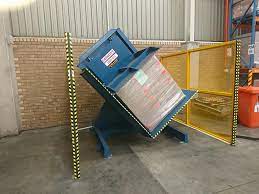
You see the basic answer, but getting this right involves more than just ticking a box. It's about understanding the 'why' behind these regulations and how the right equipment becomes a cornerstone of your entire production strategy. From the specific directives that govern machine safety to the very real, practical benefits of automating this critical transfer point, every detail matters. Let's dive deeper into the key questions you should be asking. This will help you make an informed decision that protects your business, your employees, and your customers, while also boosting your bottom line.
What are the specific CE certification requirements for food-grade pallet changers?
Navigating the world of CE certification can feel like trying to read a complex legal document. You know it's important, but the specific rules, especially for equipment that will be used in a sensitive food-grade environment, can be confusing. Making the wrong choice or overlooking a key directive doesn't just mean a failed audit; it can mean investing a significant amount of capital in a machine you can't even use, causing production delays and financial loss. But when you break it down, the requirements are logical and focused on two things: safety and hygiene. I'll help you understand the core directives you must be aware of.
The key CE certification requirements for food-grade pallet changers are rooted in several EU directives that ensure the machine is safe to operate and hygienically sound for food environments. Primarily, the machine must comply with the Machinery Directive (2006/42/EC), which covers mechanical and electrical safety. It also has to adhere to Regulation (EC) 1935/2004, which governs materials that come into contact with food, demanding the use of non-toxic, non-contaminating materials like specific grades of stainless steel. These regulations work together to create a framework for safe, compliant, and hygienic equipment.
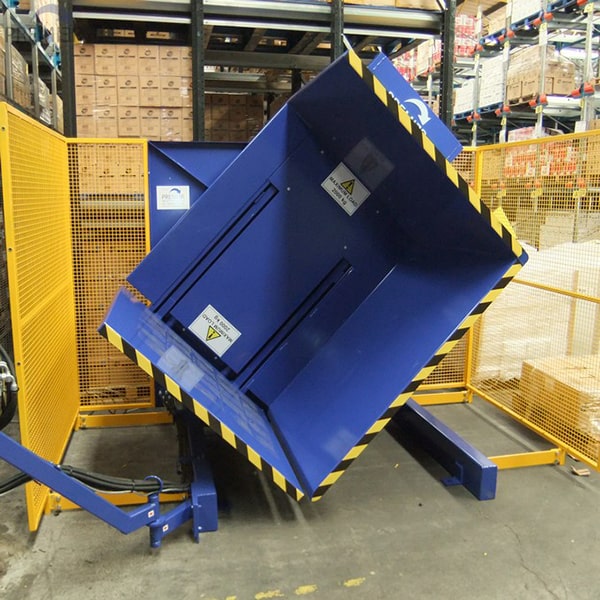
Deeper Dive: Decoding CE Directives for Your Machine
Understanding these regulations in detail is crucial. From my experience building machines, I know that compliance isn't an afterthought; it's designed into the equipment from the very first blueprint. Let's look at the main pillars of compliance for a food-grade pallet exchanger.
The Machinery Directive (2006/42/EC): The Foundation of Safety
This is the most fundamental directive. Its goal is to ensure the machine is safe for the people who operate and work around it. For a pallet exchanger, this means several things. First, all moving parts that could cause injury must be securely guarded. This could be physical mesh guarding with interlocked doors—meaning the machine stops immediately if a door is opened—or light curtains that create an invisible safety barrier. Second, it requires clearly marked and easily accessible emergency stop buttons. Third, the control systems must be designed to be fail-safe. This means if a component fails, the machine enters a safe state rather than causing an unexpected movement. The electrical system must also comply with the Low Voltage Directive (2014/35/EU) and the EMC Directive (2014/30/EU) to ensure electrical safety and prevent electromagnetic interference.
Regulation (EC) 1935/2004: Ensuring Food Safety
This regulation is what truly separates a standard industrial machine from a food-grade one. It states that any material intended to come into contact with food must not transfer its constituents to the food in quantities that could endanger human health or bring about an unacceptable change in the composition of the food. For a pallet changer, this has huge implications. While the machine may not touch the food directly, it touches the pallet that holds the food. Therefore, any surface that could potentially have contact must be made from compliant materials. This is why stainless steel (usually AISI 304 or, for more corrosive environments, AISI 316) is the standard. It also applies to smaller components like seals, gaskets, and even lubricants used in the machine's moving parts, which must be certified "food-grade."
Hygienic Design Standards (EN 1672-2): The Practical Application
While the directives set the rules, standards like EN 1672-2 provide the 'how-to' for achieving compliance. This standard outlines the principles of hygienic design.
| Design Feature | Non-Compliant Design (High Risk) | Compliant Hygienic Design (Low Risk) |
|---|---|---|
| Surfaces | Rough, porous, painted surfaces that can chip or rust. | Smooth, non-porous stainless steel surfaces (e.g., Ra < 0.8 µm). |
| Joints/Welds | Stitched welds, sharp internal corners, crevices. | Continuous, smooth, polished welds. Rounded corners. |
| Drainage | Flat surfaces where water can pool after cleaning. | Sloped surfaces to ensure self-drainage. |
| Assembly | Exposed threads, fixed parts that are hard to access. | No exposed threads, components are easily accessible or removable for cleaning. |
Meeting these standards is non-negotiable for any operation in Spain or the EU. It protects you from legal issues and is a clear signal to your clients that you prioritize safety and quality.
How does an automated pallet exchange improve hygiene in food operations?
In any food processing plant, there's an invisible line. On one side, you have the "outside world"—the warehouse, the delivery trucks, with their wooden pallets that have been everywhere. On the other side is your clean, high-care production area. The biggest challenge is moving goods across this line without dragging contaminants along with them. Manually unstacking and restacking boxes is slow, creates ergonomic risks for your staff, and every touch is an opportunity for contamination. You're essentially relying on human procedure to maintain sterility, and humans make mistakes. This manual transfer point is a ticking time bomb for a hygiene breach. An automated pallet exchange defuses this bomb. It creates a systematic, controlled, and clean break between your external logistics and your internal, hygienic environment.
An automated pallet exchange dramatically improves hygiene by creating a physical and procedural barrier against contamination. It allows incoming goods on external pallets (often wood, which can harbor bacteria, pests, and moisture) to be seamlessly transferred to sanitized, in-house pallets (like plastic or aluminum) without manual handling of the products themselves. This process minimizes the introduction of contaminants into sensitive production areas, eliminates the risks associated with dirty wooden pallets, and reduces human contact with the product, thereby upholding the highest hygiene standards required in the food industry.
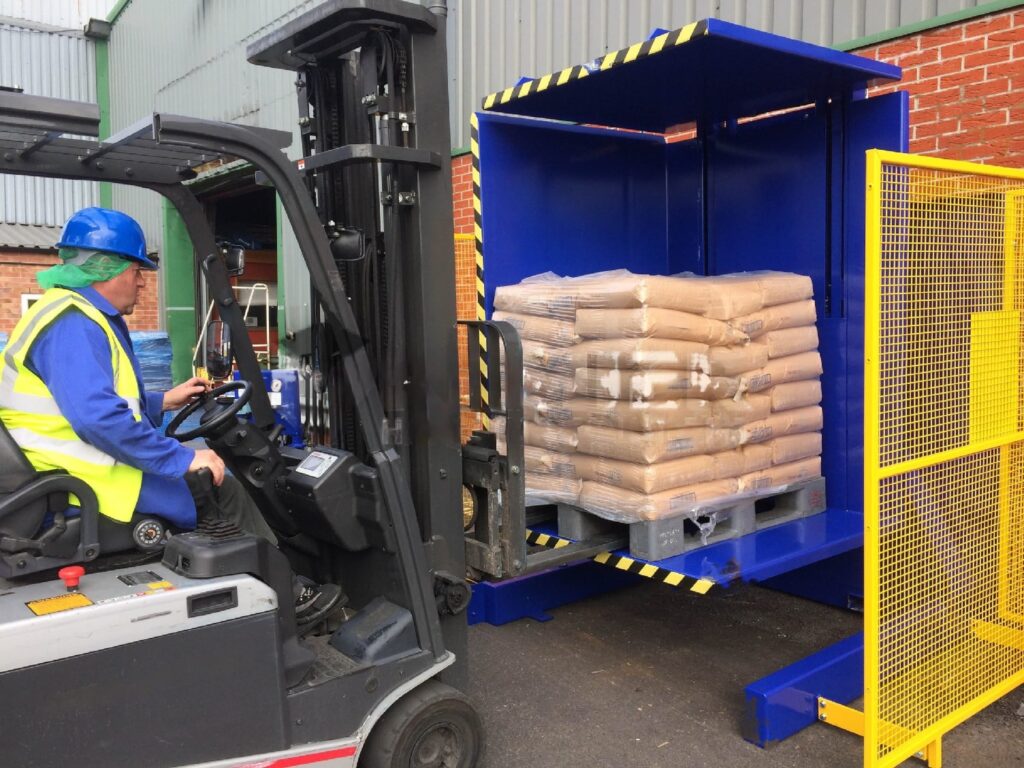
Deeper Dive: Building a Fortress Against Contaminants
The impact of automation on hygiene is profound. It moves the process from being a weak link to a strong point of control. In my career, I've seen factories transformed by automating simple, repetitive tasks. The benefits in safety and quality are always greater than expected. Let's examine how this works in practice.
Eliminating the "Trojan Horse" of Contamination
Wooden pallets are the workhorses of global logistics, but for a food-grade facility, they are a Trojan Horse. They are porous, which means they absorb water, creating a perfect breeding ground for mold and bacteria like Listeria and E. coli. They splinter, creating physical hazards that can puncture packaging. They can also carry pests from one facility to another. Banning wooden pallets from your high-care production zones is a fundamental principle of modern food safety management (HACCP). A pallet exchanger is the gatekeeper that enforces this rule. It ensures that the wooden pallet never crosses the line, effectively stopping contaminants at the door.
Creating a Clean Break: The Red Line Concept
Many advanced facilities use a "red line" system. This is a literal line on the floor that separates the low-risk (warehouse) area from the high-care (production) area. The rule is simple: nothing from the "dirty" side crosses the red line. The pallet exchanger is built into this workflow. A forklift on the warehouse side places the pallet of incoming goods into the machine. The machine then inverts or pushes the load, transferring it onto a clean, sanitized plastic or aluminum pallet waiting on the high-care side. A different forklift, which is only ever used within the high-care zone, then takes the clean pallet away. This system physically prevents cross-contamination.
Reducing Manual Handling and Human Error
Every time a person touches a product or a box, there is a risk of introducing contaminants. Even with gloves and proper procedures, the risk is never zero. Manual depalletizing is also physically strenuous, leading to fatigue, which can result in mistakes and injuries. An automated system performs the transfer with minimal human intervention. The operator simply loads and unloads the machine. This leads to a more consistent, repeatable, and hygienic process.
| Transfer Method | Contamination Risk | Ergonomic Risk | Speed & Efficiency |
|---|---|---|---|
| Manual Transfer | High (direct contact, airborne dust, pallet debris) | High (lifting, bending, repetitive motion) | Low (slow, labor-intensive) |
| Automated Exchange | Very Low (no direct contact, controlled environment) | Very Low (operator uses forklift) | High (fast, consistent cycle times) |
By implementing an automated pallet exchange, you are not just buying a piece of equipment. You are upgrading your entire hygiene protocol, making it more robust, reliable, and less dependent on human factors. This is a critical step for any food operation in Spain looking to meet and exceed both regulatory standards and customer expectations.
Why is stainless steel construction crucial for food-grade equipment in Spain?
When you're looking at new equipment, it's natural to focus on the price tag. You might see two machines that do the same job, but one, made of stainless steel, costs significantly more than a painted mild steel version. The temptation to save money upfront is strong. But in a food-grade environment, this is a classic example of a false economy. I've seen it happen. A company buys a cheaper, painted machine. Within a year, the harsh cleaning chemicals and daily high-pressure washing cause the paint to chip and flake. Rust begins to form in the scratches. Not only does this create a hygiene nightmare, with tiny crevices for bacteria to hide, but it also results in a failed audit, forcing the company to replace the machine. The initial savings are wiped out, and then some. Stainless steel isn't a luxury; for food-grade applications in Spain and across the EU, it is a fundamental requirement for long-term compliance and safety.
Stainless steel, specifically grades like AISI 304 and 316, is crucial for food-grade equipment in Spain because it is inherently resistant to corrosion, non-porous, and durable enough to withstand the rigorous cleaning protocols common in the food industry. Its smooth surface prevents bacteria from harboring and growing, and it does not chip or flake like painted steel, eliminating the risk of physical contamination. This makes it the only practical choice for meeting the strict hygiene and material requirements of EU food safety regulations and ensuring the long-term integrity of the production environment.
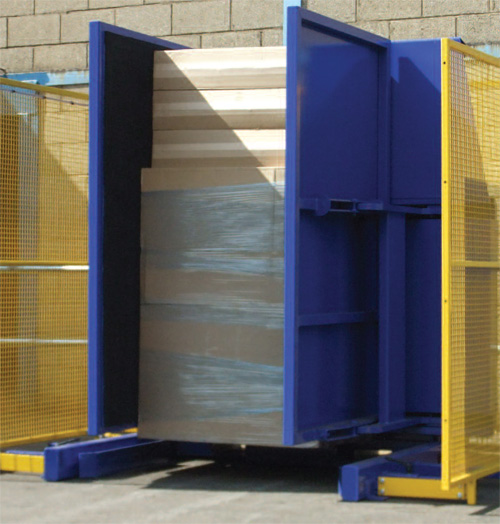
Deeper Dive: The True Value of Stainless Steel
As an engineer who has built machines for demanding industries for decades, I can tell you that the choice of material is one of the most important decisions in design. It dictates the machine's lifespan, its performance, and its suitability for the job. Let's break down why stainless steel is the undisputed champion for food applications.
Superior Corrosion Resistance
The environment in a food processing plant is incredibly harsh. You have moisture everywhere. You have acids from food products (like citrus or tomato). Most importantly, you have aggressive cleaning agents and sanitizers that are used daily. Painted or coated mild steel simply cannot stand up to this chemical assault. Once the protective coating is breached by a scratch or impact, the steel underneath begins to rust. Rust is not only a contaminant itself, but its porous, flaky surface is an ideal place for microorganisms to colonize, making it impossible to properly sanitize. Stainless steel, on the other hand, contains chromium, which forms a passive, invisible, and corrosion-resistant oxide film on the surface. If this layer is scratched, it instantly reforms, protecting the steel from rust and decay.
Unmatched Cleanability
The goal of cleaning is to remove all food residues and microorganisms. This requires a surface that is perfectly smooth and non-porous. Stainless steel provides exactly that. Its surface has no pores or cracks where food particles and bacteria can hide. It can be easily cleaned and sanitized using high-pressure water, steam, and strong chemicals without degrading. Painted surfaces, in contrast, can develop microscopic cracks in the paint, and chipped areas become bacterial traps.
Total Cost of Ownership (TCO)
A smart business owner doesn't just look at the initial purchase price; they look at the total cost of ownership over the machine's life. This is where stainless steel truly shines.
| Factor | Painted Mild Steel | AISI 304 Stainless Steel |
|---|---|---|
| Initial Cost | Lower | Higher |
| Maintenance | High (requires repainting, rust treatment) | Very Low (routine cleaning only) |
| Lifespan | Short (5-7 years in a wash-down environment) | Very Long (20+ years) |
| Compliance Risk | High (risk of failing audits due to rust/chipping) | Very Low (industry standard for compliance) |
| Downtime Risk | High (downtime for repairs and repainting) | Very Low |
| Total Cost of Ownership | High | Lower |
When you consider the costs of maintenance, downtime, and the massive financial and reputational risk of a product recall or failed audit, the higher initial investment for stainless steel is not just justified; it's the most fiscally responsible choice. It is an investment in reliability, safety, and peace of mind.
My Insights: A Strategic View for Leaders like Javier
As someone who went from being an engineer on the factory floor to owning my own packing machine factory, I've learned to look at equipment from two perspectives: the engineer's and the owner's. For leaders in any industry, whether you are Javier Morales running a steel mill in Mexico or an operations manager at a food plant in Spain, a machine is never just a machine. It's a strategic investment. It’s a tool to solve a problem—to reduce costs, improve safety, or increase output. The principles we've discussed about pallet changers in the food industry—compliance, efficiency, and long-term value—are universal truths that apply to any major equipment purchase.
For an industrial leader, an automated pallet changer is not just a box-ticking compliance tool. It is a strategic asset. It directly attacks operational costs by reducing labor and eliminating product damage. It increases throughput, boosts overall equipment effectiveness (OEE), and mitigates the enormous financial and reputational risks of a hygiene failure or safety incident. It is a foundational step in building a smarter, more automated, and more profitable factory of the future.
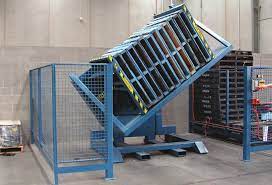
Deeper Dive: Connecting Principles Across Industries
When I talk to clients, I try to go beyond the technical specifications and discuss the business impact. This is where the real value lies, and it's a language all successful owners understand.
Seeing the ROI Beyond the Price Tag
Javier's goal to reduce overall operating costs by 8% is a perfect example of an owner's mindset. He's not just buying things; he's investing in outcomes. The same applies here. The ROI of an automated pallet changer isn't just the one or two salaries of the workers you reassign. The real ROI comes from:
- Zero Product Loss: Eliminating damage from manual handling or contaminated pallets.
- 100% Compliance: The cost of not complying is catastrophic. A single recall can cost millions and destroy consumer trust. Passing every audit without stress has immense value.
- Increased Throughput: An automated cycle is faster and more consistent than a manual one, directly contributing to higher产能利用率 (capacity utilization), a key goal for Javier. A machine that runs predictably helps you reach that 95% effective runtime target.
- Data for Digital Transformation: Modern pallet changers can be integrated with your MES (Manufacturing Execution System). They provide data on cycle times, number of pallets changed, and operational status. This is a small but crucial piece of the puzzle for achieving the comprehensive production visualization that leaders like Javier are striving for.
Parallels Between Food-Grade and Heavy Industry
You might think food processing and a steel mill are worlds apart. But as an engineer who has worked with heavy steel coils my entire life, I see more similarities than differences. The core principles of good engineering are universal.
- Reliability is Everything: In my world of steel coil packing, a machine failure can bring a multi-million-dollar production line to a halt. The same is true in a food plant. The demand for uptime and reliability is identical.
- Robustness is Non-Negotiable: A pallet changer, like a coil wrapping machine, handles heavy, awkward loads, cycle after cycle. The quality of the welds, the strength of the frame, the reliability of the hydraulics and motors—these are what separate a machine that lasts 20 years from one that fails in 5. The meticulous engineering that goes into a food-grade stainless steel machine is exactly what you should demand for any critical piece of equipment.
- Safety is Paramount: Whether you're preventing a one-ton steel coil from falling or preventing bacteria from entering a cleanroom, the system of guards, sensors, and fail-safes is based on the same safety engineering philosophy.
The Importance of a Strategic Partner
Javier's profile says he seeks strategic partners, not just suppliers. This resonates with me deeply because it's the foundation of my own business, SHJLPACK. When I started my factory, I learned that the cheapest machine is almost never the best value. You need a partner who understands your operational challenges. Someone who provides a total solution—from selecting the right machine, to installation, to training, to long-term support. This partnership is how you truly achieve ambitious goals like improving uptime and cutting costs. It’s about having an expert on your side who is as invested in your success as you are. This is the philosophy I built my company on, and it's the key to turning an equipment purchase into a genuine strategic advantage.
Conclusion
Investing in a CE-certified, stainless steel automated pallet exchange is a decisive move towards a safer, more efficient, and fully compliant food-grade operation in Spain and beyond.




